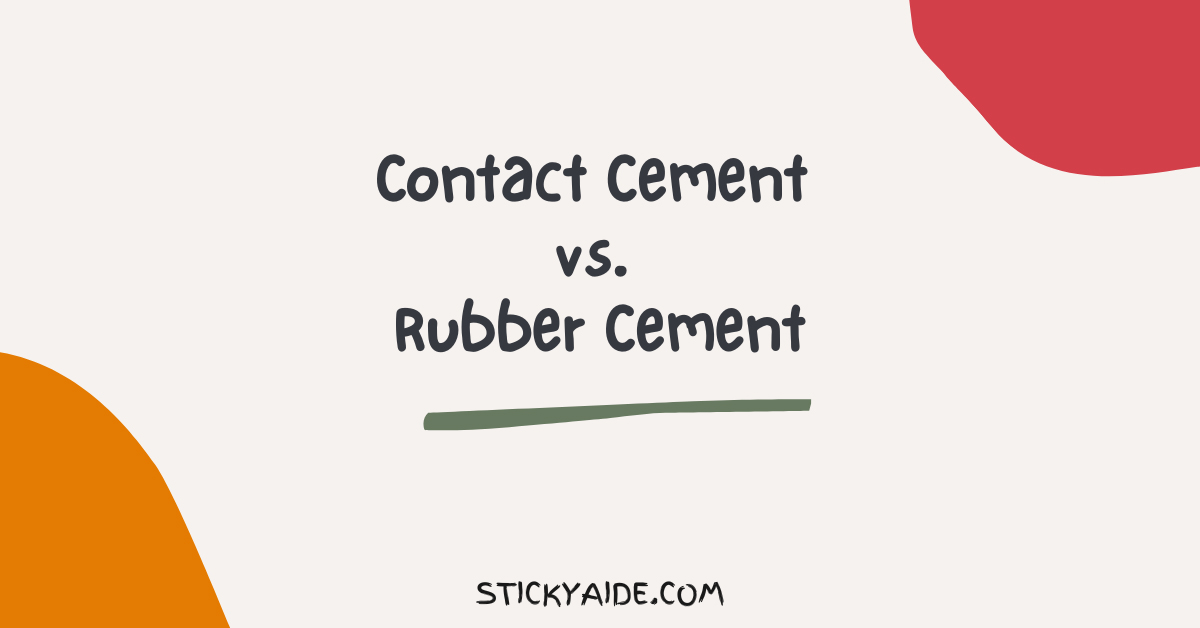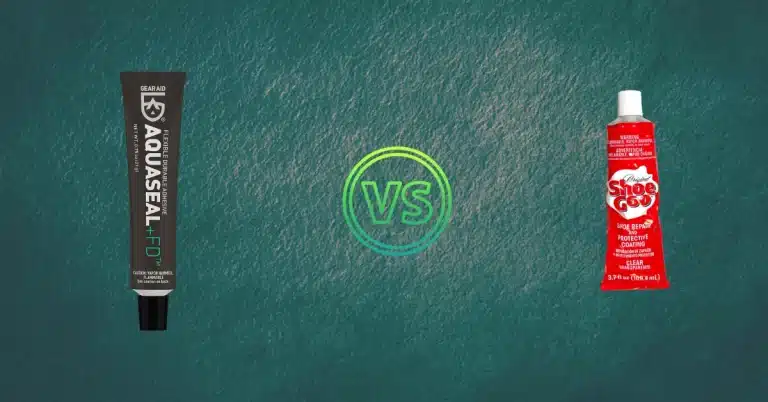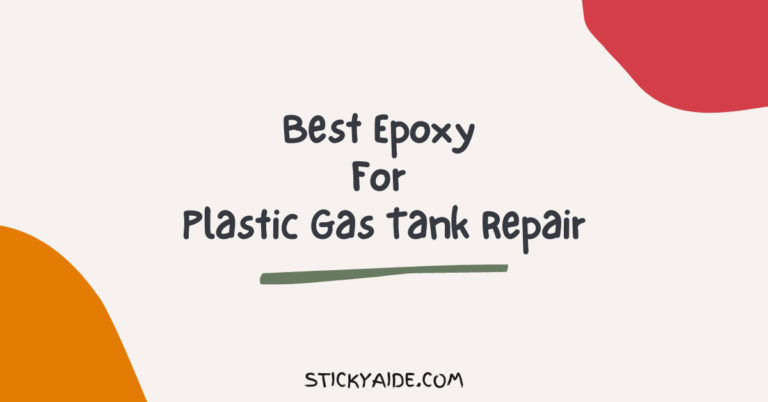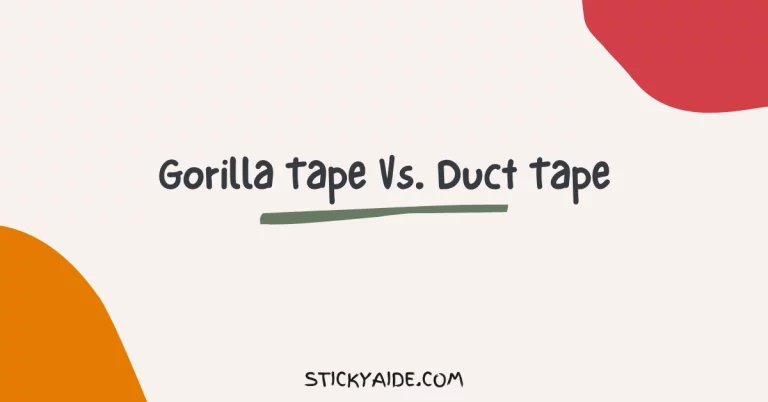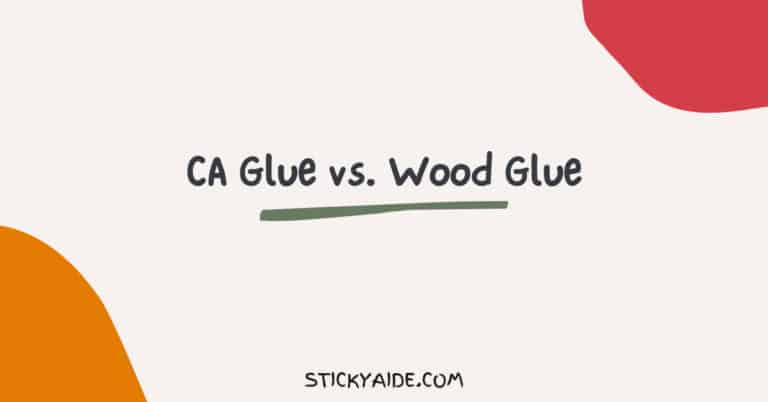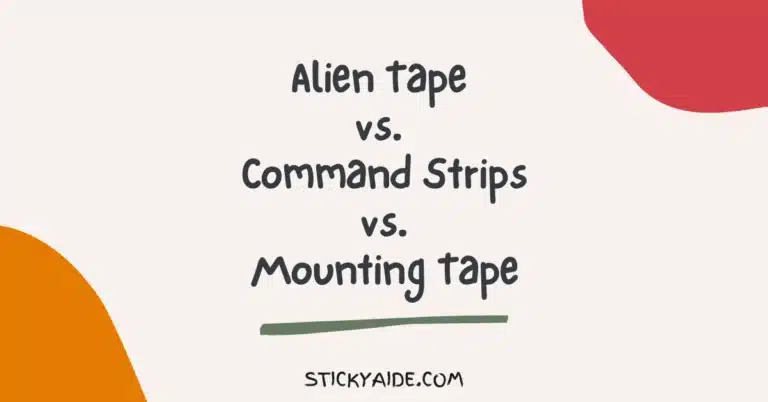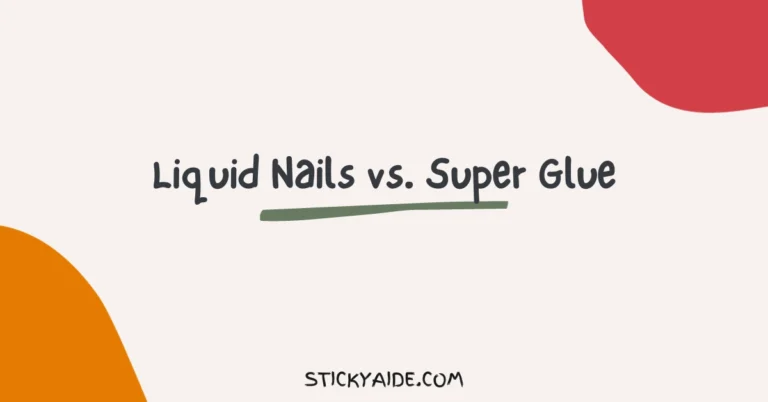When it comes to adhesive solutions, selecting the right product for your project is crucial to ensure a strong, lasting bond. Two popular types of adhesives commonly used for various applications are contact cement and rubber cement.
At first glance, these two products may seem similar, but they possess distinct characteristics that make them suitable for different purposes.
In this article, I will delve into contact cement vs. rubber cement, examining their unique properties, recommended applications, and best practices for achieving optimal results.
By understanding the distinctions between these adhesives, you can make an informed decision and choose the most appropriate glue for your next project.
Read More: How To Use Rubber Cement?
Contact Cement vs. Rubber Cement
Contact cement is a strong, permanent adhesive ideal for heavy-duty applications, while rubber cement is a temporary or semi-permanent adhesive typically used for delicate materials and projects.
The application methods vary, as contact cement necessitates application on both surfaces, whereas rubber cement can be applied to one or both surfaces. More information can be found below.
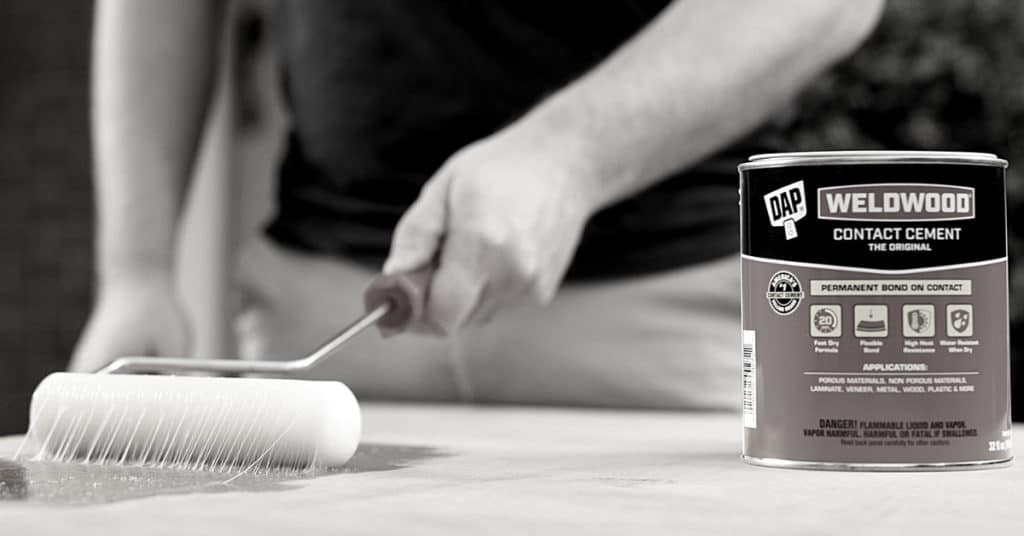
What is Contact Cement?
Contact cement is a versatile adhesive known for its strong bonding capabilities and unique application process. It is a synthetic rubber-based adhesive that creates a flexible, durable, and water-resistant bond between various materials such as laminate, wood, metal, leather, rubber, and plastic.
One of the distinguishing features of contact cement is that it is applied to both surfaces that need to be bonded together. After applying the adhesive, the surfaces are allowed to dry for a brief period, usually a few minutes, until they become tacky.
Once tacky, the surfaces are carefully aligned and pressed together, forming an instant and permanent bond. This characteristic of contact cement makes it ideal for projects where precise positioning and quick bonding are essential.
Contact cement is widely used in various applications such as woodworking, countertop installation, automotive repairs, and shoe repairs, among others. Due to its strong adhesion and resistance to heat, water, and solvents, it is a popular choice for DIY enthusiasts and professionals.
What is Rubber Cement?
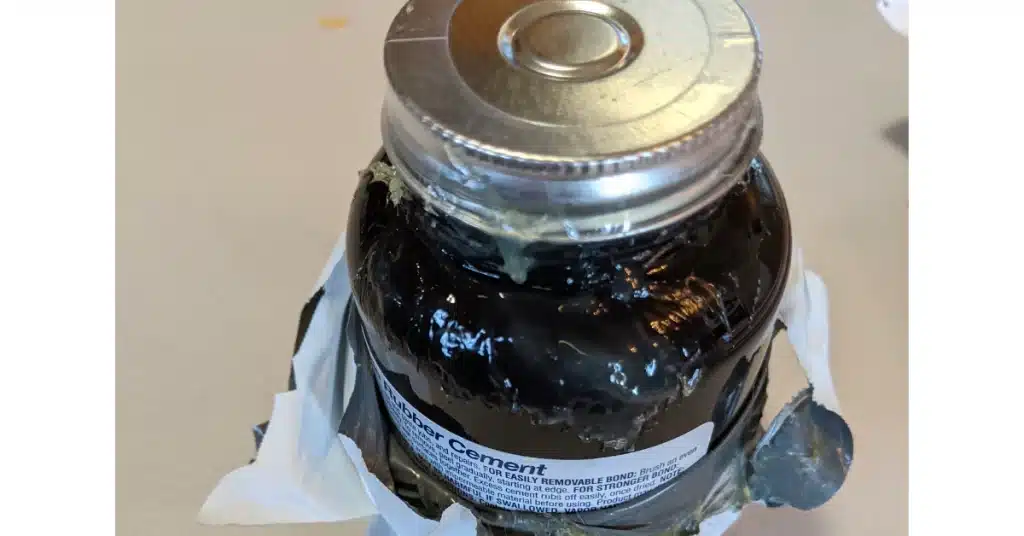
Rubber cement is an adhesive made from a mixture of elastic polymers, typically latex, suspended in a solvent such as acetone, heptane, or toluene. This adhesive is known for its flexibility, quick-drying properties, and ability to create temporary or semi-permanent bonds, depending on the application.
One of the unique features of rubber cement is that it can be applied to only one surface or both surfaces, depending on the desired bond strength. When applied to a single surface, it creates a temporary bond that allows for repositioning or easy removal without causing damage to the materials. If applied to both surfaces and allowed to dry until tacky before joining, rubber cement forms a stronger, semi-permanent bond.
Rubber cement is commonly used in arts and crafts, scrapbooking, and paper-based projects, as it does not wrinkle or damage delicate materials like paper. It is also used for bonding thin materials, such as foils, fabrics, or photographs.
However, rubber cement is not recommended for heavy-duty applications or projects that require a strong, permanent bond, as other adhesives like contact cement or epoxy may be more suitable for those purposes.
Difference Between Contact Cement and Rubber Cement
Composition: Contact cement is a synthetic rubber-based adhesive, while rubber cement is made from a mixture of elastic polymers, typically latex, suspended in a solvent.
Bond strength: Contact cement forms a strong, permanent bond, whereas rubber cement creates a temporary or semi-permanent bond, depending on the application method.
Application method: Contact cement is applied to both surfaces that need to be bonded and allowed to dry until tacky before joining. Rubber cement can be applied to one or both surfaces, depending on the desired bond strength.
Repositioning: Contact cement forms an instant bond, making repositioning difficult once the surfaces are joined. Rubber cement allows for repositioning or easy removal when applied to a single surface, making it more forgiving in case of misalignment.
Use cases: Contact cement is suitable for heavy-duty applications, such as woodworking, countertop installation, and automotive repairs. Rubber cement is more commonly used for delicate materials and projects, such as arts and crafts, scrapbooking, and paper-based projects.
Flexibility: Both adhesives are flexible, but rubber cement is generally considered more elastic, making it a better choice for bonding materials that require a higher degree of flexibility.
Solvent resistance: Contact cement is typically more resistant to solvents, heat, and water than rubber cement, making it a better choice for applications that require a durable bond under various conditions.
Read More: Contact Cement vs. Contact Adhesive
Applications of Contact Cement
Contact cement is a versatile adhesive with a wide range of applications, including:
Woodworking: Contact cement is commonly used for bonding veneer or laminate to wood surfaces, such as in furniture and cabinetry making.
Countertop installation: It is an ideal adhesive for securing laminate, metal, or solid surface countertops to base cabinets or substrates.
Automotive repairs: Contact cement is used for attaching upholstery, headliners, and trim in vehicle interiors or for bonding rubber and plastic components.
Shoe repairs: It is used to bond various materials in footwear, such as attaching soles to uppers, or for repairing separated layers within shoes.
Leather-working: Contact cement is suitable for bonding leather pieces in the crafting of belts, bags, and other leather goods.
Flooring: It can be used to secure sheet vinyl, linoleum, or rubber flooring to subfloors in commercial and residential settings.
Foam and insulation: Contact cement is often used for bonding foam materials, such as in upholstery or for attaching insulation panels in construction projects.
Bonding various materials: Contact cement is effective for joining a wide range of materials, including plastic, metal, rubber, glass, and ceramics.
Applications of Rubber Cement
Rubber cement is a flexible adhesive with various applications, particularly in delicate materials and projects. Some common uses include:
Arts and crafts: Rubber cement is widely used for bonding paper, cardboard, and other lightweight materials in collages, scrapbooking, and card-making projects.
Photography: It is often used to mount photographs on backing materials or in photo albums without causing damage to the photos.
Design and printmaking: Rubber cement is used to create temporary bonds for positioning artwork or print layouts during the design process.
Model building: Hobbyists use rubber cement to assemble small-scale models, such as plastic or paper models of cars, planes, or buildings.
Bookbinding and paper repair: Rubber cement can be used to repair torn pages, reattach book covers, or bind loose pages together.
Bonding thin materials: Rubber cement is suitable for joining thin materials like foils, fabrics, or textiles, which require a flexible adhesive that won’t damage the material.
Temporary fixes: Rubber cement can be used to create temporary bonds or repairs, as it can be easily removed without leaving residue or damaging surfaces.
Office tasks: It can be used for tasks like attaching labels, sealing envelopes, or mounting items on bulletin boards.
Pros of Contact Cement
Strong bond: Contact cement creates a durable and permanent bond, making it suitable for heavy-duty applications.
Versatile: It can be used to bond a wide range of materials, including wood, metal, plastic, rubber, leather, glass, and ceramics.
Fast-acting: Contact cement forms an instant bond once the two surfaces are joined, making it ideal for projects that require quick bonding.
Flexible: The adhesive remains flexible after curing, which allows it to accommodate some movement or stress without breaking the bond.
Water-resistant: Contact cement is resistant to water and various solvents, making it suitable for both indoor and outdoor applications.
Heat-resistant: It can withstand high temperatures without losing its bonding properties, making it ideal for use in areas exposed to heat.
Cons of Contact Cement
Application process: Contact cement requires precise application on both surfaces and can be messy to work with, particularly for inexperienced users.
Limited repositioning: Once the two surfaces are joined, repositioning is difficult due to the instant bond that forms.
Fumes: Contact cement can emit strong fumes during application, making it necessary to work in a well-ventilated area and wear proper safety equipment.
Shelf life: Contact cement has a limited shelf life and may lose its bonding properties over time, particularly if not stored correctly.
Not suitable for all materials: Contact cement may not be the best choice for bonding some materials, such as Styrofoam, as it can cause damage or deterioration.
Read More: Rubber Cement vs. Super Glue
Pros of Rubber Cement
Flexibility: Rubber cement remains flexible and elastic after curing, making it suitable for materials that require some degree of movement or flexibility.
Easy repositioning: Rubber cement allows for easy repositioning or removal when applied to a single surface, making it forgiving in case of misalignment.
Non-damaging: It can be used on delicate materials without causing damage, as it can be removed without leaving residue or tearing surfaces.
Easy to work with: The application process is generally less messy than that of contact cement, making it more user-friendly, especially for beginners.
Suitable for temporary bonds: Rubber cement is ideal for creating temporary bonds or fixes, as it can be easily removed later without damaging surfaces.
Widely used in arts and crafts: Rubber cement is a popular choice for bonding paper, cardboard, photographs, and other lightweight materials in various creative projects.
Cons of Rubber Cement
Limited bond strength: Rubber cement creates a temporary or semi-permanent bond, making it unsuitable for heavy-duty applications that require strong, permanent adhesion.
Not water-resistant: Rubber cement is generally not as resistant to water or solvents as contact cement, limiting its use in outdoor or wet environments.
Fumes: Rubber cement can emit strong fumes during application, making it necessary to work in a well-ventilated area and wear proper safety equipment.
Not suitable for all materials: Rubber cement may not bond effectively with some materials, such as certain plastics or metals.
Drying time: Rubber cement can take longer to dry than contact cement, which may not be ideal for projects requiring a quick bond.
Is contact cement stronger than rubber cement?
Yes, contact cement is generally stronger than rubber cement.
Contact cement forms a durable and permanent bond, making it suitable for heavy-duty applications and bonding a wide range of materials, including wood, metal, plastic, rubber, leather, glass, and ceramics.
In contrast, rubber cement creates a temporary or semi-permanent bond and is primarily used for delicate materials and projects that require a flexible adhesive.
Are contact cement and rubber cement the same?
No, contact cement and rubber cement are not the same. They differ in their application methods, bonding strength, and suitability for various materials and projects.
Contact cement is a strong and permanent adhesive that requires precise application on both surfaces, while rubber cement is a flexible adhesive that can be easily removed and repositioned when applied to a single surface.
Additionally, contact cement is suitable for heavy-duty applications and can bond a wide range of materials, while rubber cement is primarily used for delicate materials and projects that require a temporary or semi-permanent bond.
Can contact cement be used on rubber?
Yes, contact cement can be used on rubber.
Contact cement is a versatile adhesive that can bond a wide range of materials, including rubber.
However, it’s important to note that some types of rubber may not bond well with contact cement, particularly if they contain oils or other substances that can interfere with adhesion.
It’s always recommended to test the adhesive on a small, inconspicuous area first to ensure it works well with the specific type of rubber being bonded.
Last Opinion
In conclusion, contact cement and rubber cement have pros and cons. Contact cement is excellent for bonding two surfaces together quickly, but it can be challenging to work with. Rubber cement is more forgiving, but it takes longer to set. Ultimately, the best adhesive for your project will depend on your specific needs.

